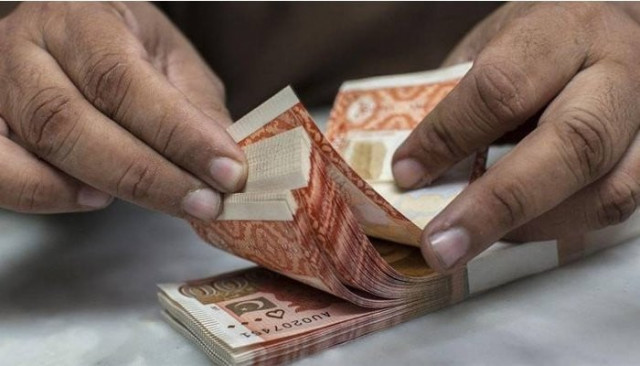Centre spends ‘Rs710b’ on devolved ministries
WB says despite fiscal crunch huge spending contributing to higher public debt

Amid severe fiscal constraints, the federal government is still spending over Rs710 billion every year by retaining 17 devolved ministries and financing development projects in areas that under the Constitution fall in the provincial domain, said the World Bank.
The huge spending is contributing to higher public debt besides keeping many initiatives of the Centre under-funded.
Before the devolution, the federal government was spending 0.39% of the GDP on the 17 ministries that were subsequently devolved to the provinces under the 18th Amendment in the Constitution.
However, after some time, the PPP government and its successive ones, revived all those ministries – a move that is now resulting in a duplication of the expenditures.
The spending on these 17 ministries has increased to 0.59% of the GDP or Rs328 billion per annum as of last fiscal year, said Derek Chen, a senior economist working with the World Bank.
In its recent publications, the World Bank has advised the federal government to realign its expenses only to those subjects, which under the Constitution were its responsibility.
Under the 18th Amendment in the Constitution, the Centre had increased the provincial share by 11% to 57.5% of the federal divisible pool on the grounds that the transfer of the new subjects to the provinces would need additional resources.
However, over the period of time, all these ministries were revived to accommodate ministers and bureaucrats.
However, the Centre still blames the 18th Constitutional Amendment for its own wrong policies.
Derek said half of the federal Public Sector Development Programme (PSDP) or Rs315 billion was also spent on projects that fell under the provincial domain.
Another Rs70 billion is given to the Higher Education Commission every year.
The federal government spent Rs3.179 trillion alone on debt servicing during the first eight months of the current fiscal year -- a sum that was Rs17 billion more than its net income.
This means the Centre is now bearing all the expenses, including spending over Rs710 billion annually on provincial subjects, by taking more loans.
The interest that it will now pay on these loans will be over 22%.
The average budget deficit during the past 10 years was 6.8% of the GDP.
Chen said the persistent high deficit had led to the accumulation of a massive public debt.
“The strong expansionary fiscal policies also drove the higher imports and the consequent higher current account deficits,” he added.
For this fiscal year, the government will again breach its budget deficit target that the World Bank has now projected to widen to 6.9% of the GDP or Rs5.4 trillion.
The World Bank findings also showed how the rich class was availing subsidies meant for the impoverished people in Pakistan.
In 2019, the bottom 40% of the population was receiving only 24% of the subsidies while the rest of the people availed 64% of them, according to the World Bank staff’s calculations.
This ratio has now been reversed after the last round of electricity price hike.
In the fiscal year 2019, the poorest one-fifth of the population was receiving just 9.8% of total subsidies, whereas the richest segment was availing 32.1% of them, according to the World Bank.
Now the poorest class is availing 28% of the subsidies while the richest people are receiving 4.9% of them.
The World Bank underlined that Pakistan did not have much space to cut its expenditures since 70% of them were rigid in nature and being incurred on employees, pensions, operating expenses and interest.
There is not much room available to reduce rigid expenses unless deeper reforms are introduced like withdrawal of untargeted subsidies.
The World Bank has also pointed fingers towards sales tax exemptions being given to affluent groups that were heavily costing the compliant taxpayers.
In 2019, the GST collection was equal to 3.3% of the GDP.
The potential of the GST collection was nearly 4% provided tax exemptions were withdrawn.
However, the elephant in the room was the GST registration exemption threshold that the Federal Board of Revenue (FBR) maintains to register traders, who are above this Rs5 million annual turnover limit.
If the Rs5 million GST registration threshold is removed, the collection potential will jump to 6.53% of the GDP, according to the World Bank.
At this year’s projected size of the economy, this will translate into Rs5.1 trillion GST collections -- indicating that Rs2 trillion are lost every year by keeping the traders outside the tax net.
The sales made by retailers below this threshold also remain outside the formal economy.
In October 2019, the traders received major concessions from the then government when it increased the exemption limit for sales tax registration for them.



















COMMENTS
Comments are moderated and generally will be posted if they are on-topic and not abusive.
For more information, please see our Comments FAQ